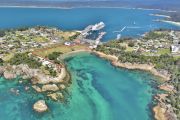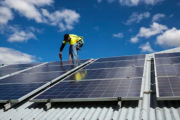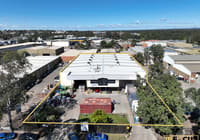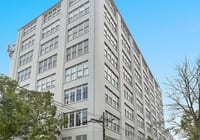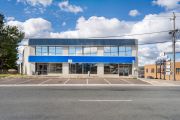
Mall owner says rates relief ‘turning point’ in sight
The CEO of the country’s biggest suburban mall landlord says its business is at a turning point as it sees through the worst of high inflation and reported a modest uplift of almost 1 per cent in the value of its $4.3 billion portfolio.
Led by Anthony Mellowes, Region Group, is finely tuned to the consumer economy with its 88 convenience-focused malls, dominated by supermarket giants Coles and Woolworths.

“We’ve now come through a period with a big rise in costs, with inflation and interest rates coming up. And we’re now in this period where rates are stabilising. We are at an inflection point,” Mr Mellowes told The Australian Financial Review after reporting the company’s 2025 first-half result.
“Retailers have held up better than expected. We are at a point where, if interest rates do come down, there will be some more money in people’s pockets.”
High interest rates and inflation have weighed on landlords such as Region just as much as shoppers. A year ago Region had written down the value of its national malls portfolio by $105.4 million, mostly as a result of the high investment yield – known as the cap rate – applied to its assets.
But Region’s cap rate – a key metric for commercial property landlords – has risen just 1 basis point in the past six months, to 6.09 per cent. That stabilisation, along with growing rental income, allowed Region to revalue its portfolio by a modest $7.9 million, on a like-for-like basis.
As a result, while Region’s earnings – expressed as funds from operations – held steady at $87.9 million, its 2025 interim bottom line returned to profit at $81.8 million, compared to the $35 million loss it reported a year ago.
Region’s guidance for earnings over the full 2025 financial year at 15.5¢ per security is virtually level with the previous year, as is its distribution expectation at 13.7¢. But as the cycle turns, Mr Mellowes is hopeful for growth.
“With interest rates rising FY 24 was a flat year for us. FY 25 was flat but [for] FY 26 we’re looking like growth is coming back again,” he told the Financial Review.
“There is still a bit [of headwinds] in the system but our gross income growth is as good as almost it’s ever been. We’re there, but the expenses coming down will be a benefit for us going forward.”
Supporting Mr Mellowes’ confidence is the national forecast for the supply of new retail space. It has contracted sharply, relative to population growth, as building costs rise.
“I don’t think there is going to be a lot of new space rolled out and there is good population growth. So if you own a lot of retail [space] in Australia then, relatively, you are going to do pretty well,” he said.
Analysts at UBS noted that Region’s outlook suggested it expected a stronger second half of the year.
Citi analyst Howard Penny said the leasing spread – the difference in rents between Region’s old and new or renewed tenants – of 2.1 per cent was lower than the 4 per cent it achieved in FY 2024, but nevertheless showed “that the negotiating power remains in the hands of the landlord”.
Of more concern was a provision against the collapse of fashion retailer Mosaic Brands, one of Region’s tenants, and the fact its property expenses had grown faster at 6.7 per cent than income, at 2.6 per cent, over the interim period.
“As CPI and cost inflation drops, we expect to see the operating margins improve,” Citi’s Mr Penny wrote in a client note.

